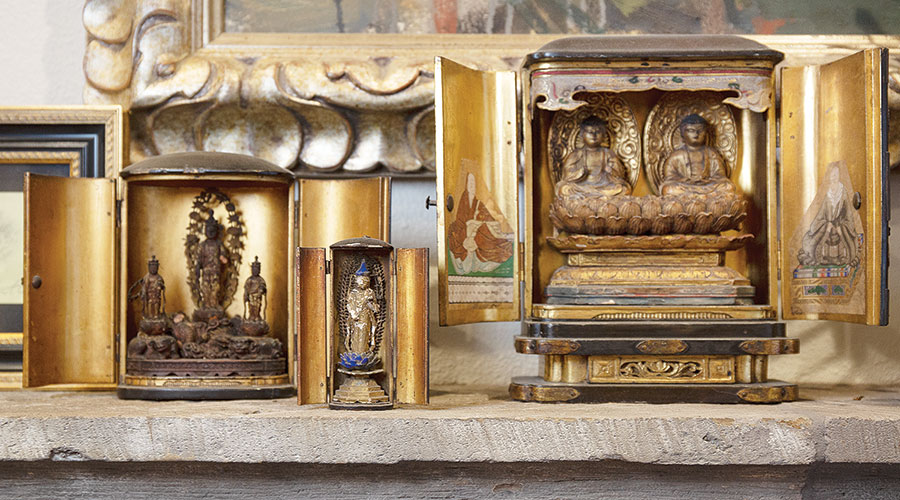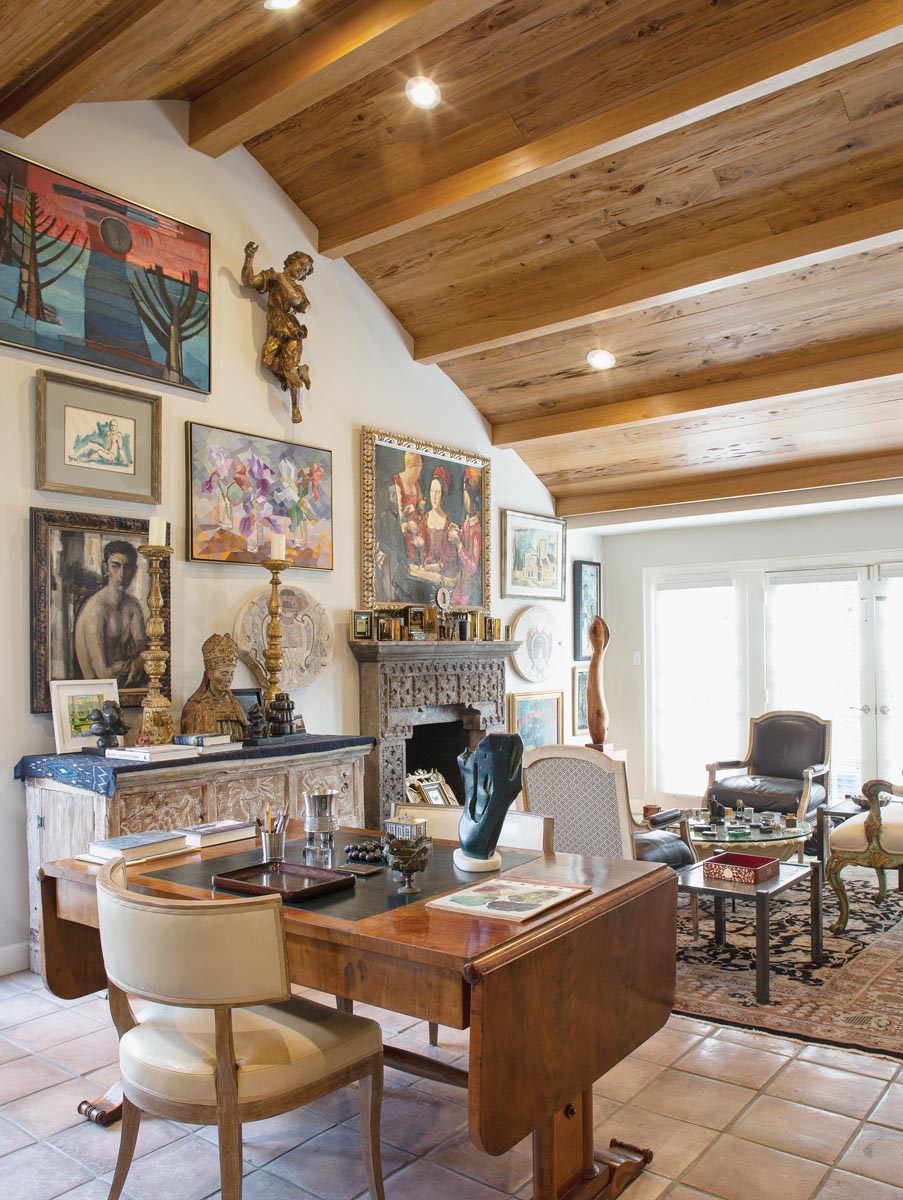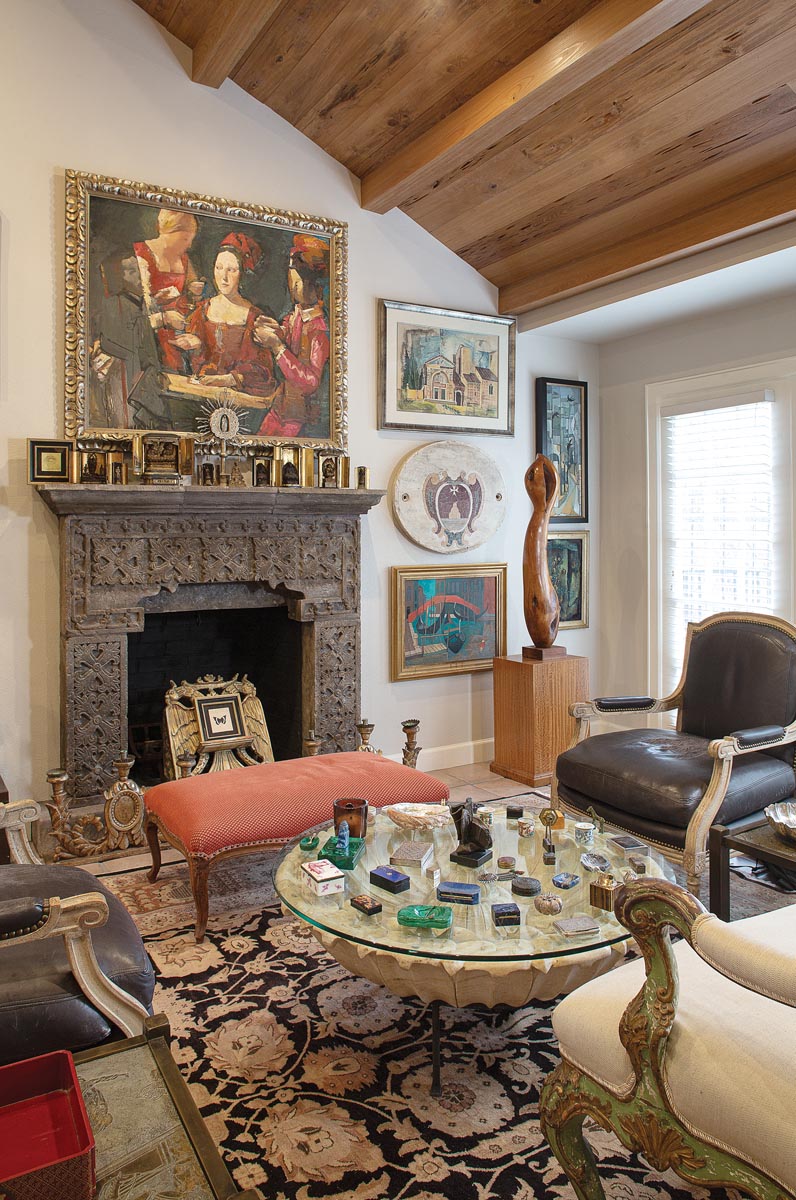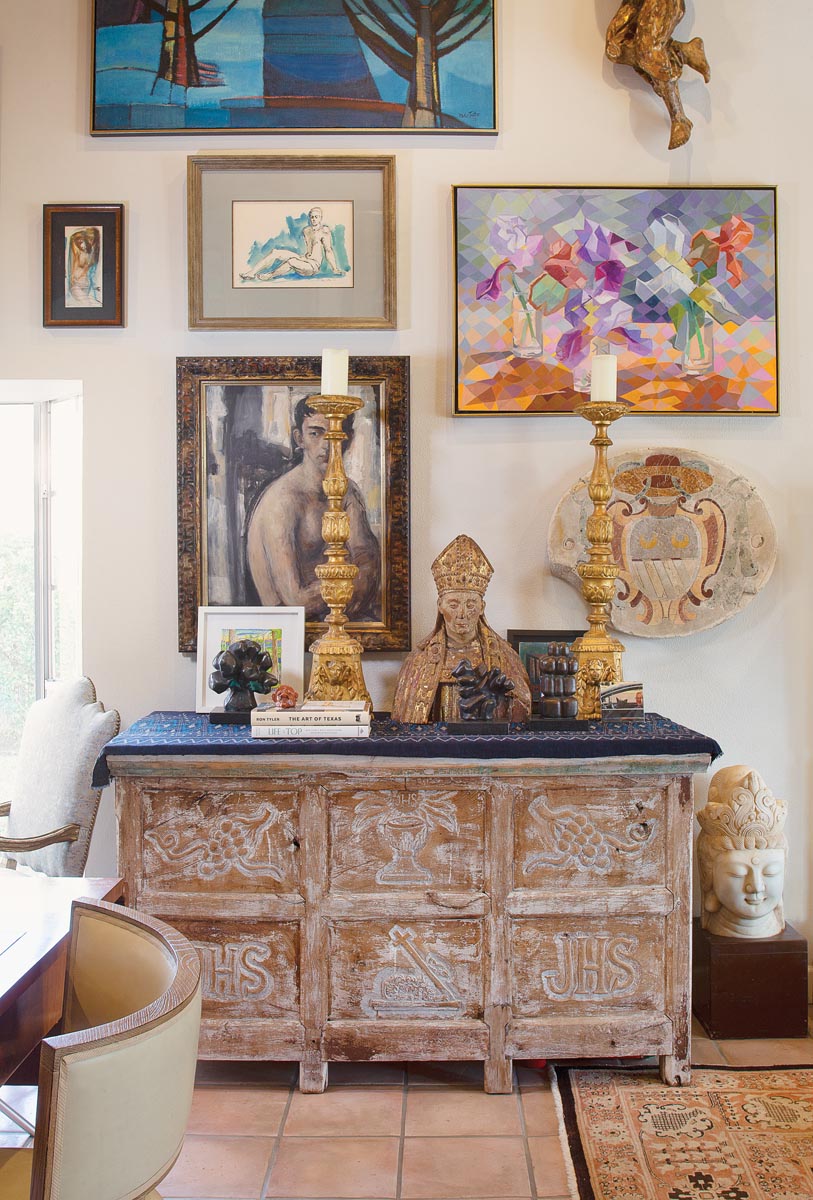
More is More
By Meda Kessler
Photos by Ralph Lauer
There’s nothing minimal about Carter Bowden’s home. And that’s the way he likes it.
In our address book, we’ve always written Carter Bowden’s whereabouts in pencil.
The longtime Fort Worth antiques dealer — Carter Bowden Antiques has been a fixture on the city’s Westside for more than 20 years — has moved at least four times since we’ve known him. And we’ve written about each Cowtown residence, from a traditional house to three different condos, including a high-rise abode.
Bowden admits he has long leaned toward more of an urban lifestyle, having lived in New York City after college. He also looks at moving as a way to shake things up when he feels too settled. “Sometimes I get bored too easily,” he says with a laugh.
His latest move, three years ago, took him to his smallest residence yet: a 996-square-foot corner unit in Fort Worth’s Indian Creek Condominiums, a community of mostly single-story units built around 1970. The parklike setting is quiet yet conveniently located. “When a corner unit came up for sale, I grabbed it,” says Bowden. It put him right next to the tree-lined creek, which typically runs at a trickle, and a grassy area that’s perfect for Kerwin, Bowden’s Scottish terrier.
But Bowden, as always, puts his personal stamp on wherever it is that he calls home. At Indian Creek, he gave his new home instant panache by vaulting the ceiling in the living/dining room and covering it with pecky cypress wood accented with solid beams. The new ceiling makes the space feel bigger and, most importantly, allows Bowden more wall space for his extensive art collection. While he had to sell much of the furniture he had in the high-rise, his paintings and other collectibles made the move. For instance, a Zack Hawkins painting that was displayed over a massive French Moderne wood sideboard now sits above a subtle but substantial 18th-century marble console.
Other design changes include the fireplace, which Bowden says was covered in an obtrusive orange brick. Now it’s faced in Cantera stone from Mexico. As for furnishings, Bowden eschews the typical arrangement of sofa and chairs. Instead, he prefers mainly chairs of various provenance along with a mix of tables, some of which serve to display the collectibles and keepsakes — big and small — that have made the move from home to home. All have stories connected to them: a trip to London, a gift from a friend, a chance find made through his vast network of clients and fellow collectors. They’re personal rather than purely decorative.
In Bowden’s world, it makes sense to use a massive marble base that once was part of a fountain in India as a coffee table (it’s now topped with glass). Other pieces have been repurposed as well. A 1940s wood altar from San Miguel serves as a sideboard. A Biedermeier desk that once belonged to Ted Pillsbury, the former head of the Kimbell Art Museum, does double duty as Bowden’s office/dining table as needed. Inside the fireplace, a handcarved giltwood book/Bible holder displays a drawing of a butterfly by Fort Worth artist Scott Gentling.
When it comes to paintings and sculpture from local talent, Bowden’s home is an homage and a gallery. And he’s a passionate curator. “I’ve been collecting American art since I was 14,” he says. “And I have a particular fondness for Fort Worth Circle artists, especially George Grammer, the youngest member.” The Circle was a progressive group of artists active during the 1940s and ’50s.
Bowden met Grammer, who died in 2019, at a fundraiser the year before. “I got to know George and his family, and ended up representing him through the store,” says Bowden. Born in Fort Worth but a longtime resident of New York, Grammer has work in the collections at the Amon Carter Museum of American Art and the Dallas Museum of Art, among other institutions. He’s also well represented in Bowden’s home along with other Circle members including Cynthia Brants, Dickson Reeder and Bror Utter.
He shows off one Grammer painting that had been sitting in an attic, unprotected, for years. The homeowner had no idea how it got there and contacted Bowden after finding it to determine whether it was authentic. “I paid for the shipping, as I was curious, too. Aside from some slight damage to the canvas, it was in great shape considering where it was found.”
Today, the same painting hangs in Bowden’s home. He surveys the walls. “You know, there’s room for more.”




